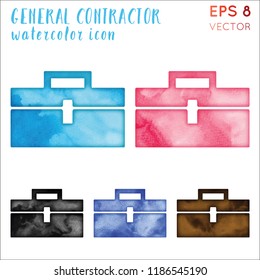To Make Certain The Success Of Your Paint Job, It Is Very Important To Be Knowledgeable About The Substantial Differences Between Exterior And Interior Paint. Discover The Crucial Information You Need Prior To Starting Your Task
To Make Certain The Success Of Your Paint Job, It Is Very Important To Be Knowledgeable About The Substantial Differences Between Exterior And Interior Paint. Discover The Crucial Information You Need Prior To Starting Your Task
Blog Article
Developed By-Pace Henry
When you're selecting between exterior and interior paint, it's essential to comprehend their basic differences that affect both performance and looks. Interior paints are crafted for lower VOC levels and smoother finishes, making them suitable for interior rooms, while exterior paints are designed to endure extreme weather conditions and UV direct exposure. Each kind offers an unique objective, yet recognizing when to use one over the other can considerably affect your job's result. So, what aspects should you consider when making your option?
Composition and Formula
When choosing between exterior and interior paint, recognizing their composition and formulation is vital. Inside paints normally include a lower amount of unpredictable organic compounds (VOCs), making them more secure for indoor air high quality. You'll see they often have a smoother finish, which enhances their capability to withstand discolorations and allows for less complicated cleaning. They're designed to withstand the rigors of interior settings, consisting of differing moisture levels and temperature level variations.
On the other hand, outside paints are formulated to withstand harsher problems. They typically contain higher degrees of pigments and ingredients to stand up to fading from UV rays, along with to avoid mildew and mold growth. Their composition consists of extra binders and materials, which provide much better adhesion to surface areas revealed to the elements. This makes sure the paint can endure rain, snow, and rising and fall temperature levels without peeling off or fracturing.
Performance and Durability
Assessing efficiency and sturdiness is necessary when selecting in between exterior and interior paint. Inside paint is designed for surfaces that experience less wear and tear. It normally withstands fading and scuffing, making it suitable for living rooms and bed rooms. Nevertheless, it may not hold up well in high-moisture areas like bathroom and kitchens without proper solution.
On the other hand, exterior paint deals with harsher conditions. It's crafted to hold up against UV rays, rainfall, and temperature level variations. This kind of paint frequently includes additives that avoid mold and mildew growth, ensuring durability in different climates. When https://www.21oak.com/inspiration/basement-paint-ideas/ make use of external paint, you can expect it to last a number of years much longer than interior paint, provided it's used appropriately.
Another key difference depends on the coating alternatives. Interior paints often have a variety of coatings for aesthetic charm, while outside paints focus on durability over shine. If you're looking for something that can take care of the elements, exterior paint is your best bet.
On the other hand, if you're focused on interior visual appeals with much less concern for extreme problems, interior paint might be ideal. Inevitably, https://judahydins.goabroadblog.com/30703326/understand-just-how-hiring-expert-residence-painters-can-dramatically-uplift-your-home-s-visual-charm-and-worth-prompting-you-to-imagine-the-amazing-transformations-that-could-redefine-your-living-location should straighten with the details needs of the environment.
Aesthetic Considerations
A fresh layer of paint can transform a space, however aesthetic factors to consider play a crucial duty in your selection between interior and exterior options. When you're selecting paint, think about the mood you wish to create. Interior paint permits you to check out a bigger series of colors and coatings, enabling you to express your individual design and enhance your home's setting. Whether you go with soft pastels or strong tones, the right interior paint can make your spaces really feel relaxing, dynamic, or calm.
On the other hand, outside paint requires to line up with your home's architecture and the surrounding environment. Below, you're not just making a design statement; you're also considering aesthetic allure. Selecting colors that integrate with your area can enhance your home's value and visual appeal. Keep in mind that outside paint is additionally based on fading and weather condition changes, so choosing an ageless shade can save you from regular repainting.
Eventually, consider how each alternative fits your vision. By aligning your paint option with your preferred visual, you can produce rooms that mirror your character while keeping functionality.
Final thought
When it concerns picking paint, understanding the essential differences in between interior and exterior choices is crucial. Interior paints focus on appearances and low VOCs, making them perfect for boosting your interior areas. On the other hand, outside paints are developed for longevity and climate resistance, safeguarding your home from the elements. By considering your particular demands and the setting, you can confidently select the best paint to achieve the look and durability you want for your room.
